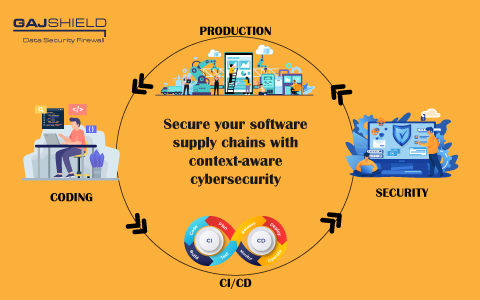Secure your software supply chains with context-aware cybersecurity
It is common practice for enterprise IT and cybersecurity teams to urge all users to constantly update their business software to the latest version. The biggest reason cited for such imperatives is often to improve security, and not just functionality. After all, updated software means zero security vulnerabilities, right? Not really.

Most enterprises get updates through a continuous integration and continuous delivery (CI/CD) process to ensure continuity during upgrades. It is possible that the new updates may have vulnerabilities built into them inadvertently or deliberately. It is also possible that parts of code that make up the updates may have open-source dependencies that have vulnerabilities — a likely scenario considering that over 85% of all enterprise codebases come from open source. A cyberattack that happens through such a channel is considered a “software supply chain attack.” If an open-source library that your business software library depends on has vulnerabilities, then those vulnerabilities may also extend to your software — similar to how any problem in a real-world supply chain affects the entire supply chain.
Now, it may not be feasible for you to fully control where the code for your updates is derived from. But you can control the way the updates are scrutinized before becoming a part of your enterprise network. A context-aware firewall solution, like that offered by Gajshield, can ensure that every line of code is secure without impacting the continuity of operations. It carries out threat detection at a granular level to flag individual events and processes that may lead to data leaks. As a result, you can ensure that your enterprise software offers ever-improving functionality minus the risk of software supply chain threats.
Get In Touch With Us
Subscribe to our Newsletter
2025 © GajShield Infotech (I) Pvt. Ltd. All rights reserved.
